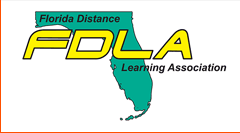
Tuesday, September 29, 2015
Integrate an eTextbook in Your Course? Not so Fast, My Friend...
Location
Conrad
Start
9-29-2015 10:00 AM
End
9-29-2015 10:50 AM
Abstract
For students taking online courses or enrolled in fully online programs, it is reasonable for all course materials to be accessed digitally. This expectation extends to the traditional textbook, with the rise of eTextbooks and other alternatives such as open educational resources and digital course packs. These digital materials may offer a more costeffective alternative than the print textbook, and may offer pedagogical advantages by being integrated within online courses. However, university relationships with campus bookstores implicitly structure which instructional resources are available and in what manner. In this study, a document analysis was conducted on the bookstore contracts for the Florida public universities. Namely, issues of textbook affordability and digital resources were investigated. We found that textbook affordability was generally conceived in terms of print rental textbooks and buyback programs, and that eTextbooks were always marked up in price (25% to 30% profit). Implications will be shared.
Integrate an eTextbook in Your Course? Not so Fast, My Friend...
Conrad
For students taking online courses or enrolled in fully online programs, it is reasonable for all course materials to be accessed digitally. This expectation extends to the traditional textbook, with the rise of eTextbooks and other alternatives such as open educational resources and digital course packs. These digital materials may offer a more costeffective alternative than the print textbook, and may offer pedagogical advantages by being integrated within online courses. However, university relationships with campus bookstores implicitly structure which instructional resources are available and in what manner. In this study, a document analysis was conducted on the bookstore contracts for the Florida public universities. Namely, issues of textbook affordability and digital resources were investigated. We found that textbook affordability was generally conceived in terms of print rental textbooks and buyback programs, and that eTextbooks were always marked up in price (25% to 30% profit). Implications will be shared.
